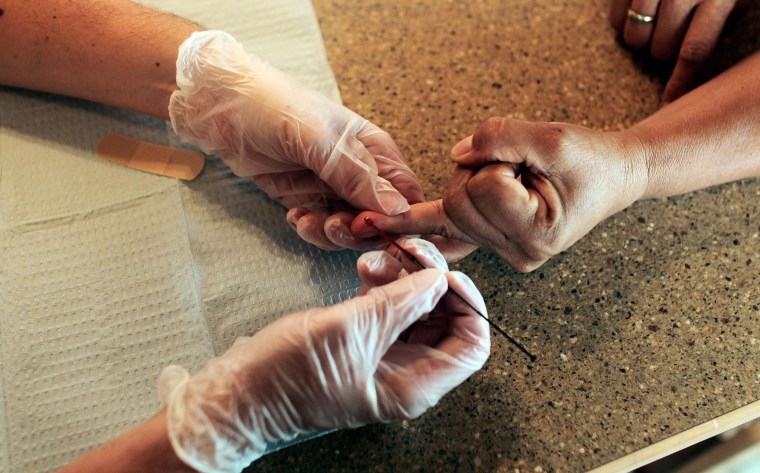New statistics show the number of Americans being newly diagnosed with diabetes is falling, reversing a trend that makes diabetes a major killer.
And a second study shows fewer Americans have high cholesterol. Experts say it may be that people are starting to slowly take health warnings seriously.
In 2009, the Centers for Disease Control and Prevention recorded 1.7 million new cases of diabetes. By last year, it dropped to 1.4 million.
“We are looking at some progress we have been making in America,” said Dr. Gerald Fletcher of the Mayo Clinic in Jacksonville, Florida, who is a spokesman for the American Heart Association.
“Of all the fat countries we always been the fattest top three or four in the world."
Still, the total number of people with diabetes is going up. CDC says 22 million Americans had been diagnosed with diabetes in 2014, about the same as in 2013 and up from 20.7 million in 2011 and 10 million in 1997.
Diabetes directly kills more than 71,000 people a year, according to the American Diabetes Association.
Most cases are type-2 diabetes, which is linked to poor diet and a lack of exercise.
“Of all the fat countries we always been the fattest top three or four in the world,” Fletcher said. More than two-thirds of Americans are either overweight or obese, and extra pounds cause cholesterol, blood sugar and blood pressure to rise.
A second report shows levels of unhealthy cholesterol are also starting to fall.
“The prevalence of high total cholesterol has declined,” Margaret Carroll, an epidemiologist at the CDC’s National Center for Health Statistics who led the cholesterol study, told NBC News.
Her team found that 12 percent of U.S. adults had high cholesterol levels – defined as a reading of 240 – in 2011 to 2014. That’s down from 13.4 percent in 2009-2010. “It’s a good sign,” Carroll said.
While the widespread use of cholesterol-lowering drugs such as statins is certainly a factor, it cannot explain everything, Carroll said. Statins, which include Lipitor, Mevacor, Crestor and Zocor, are extremely popular. They're prescribed to about 15 percent of U.S. adults.
But, Carroll said, “We found a decline in mean (average) cholesterol even among people not on cholesterol-lowering medications,” she said.
“Drugs are wonderful,” Fletcher said. “But at the same time, people are beginning to do more regular exercise.”
Fletcher, who says he works out on a stationary bicycle, treadmill and elliptical machine, said doctors and nurses alike are beginning to urge patients to exercise and it pays off quickly.
“We are getting more user-friendly for exercise in many parts of the country.” Sidewalks, trails for runners, bikers and walkers and even neighborhood gyms can all help.
“Drugs are wonderful. But at the same time, people are beginning to do more regular exercise.”
Smoking is also linked with high cholesterol, Carroll noted.
“I believe smoking has decreased. That could be one thing,” she said.
The CDC says the number of smokers has plummeted by nearly 20 percent in the past 10 years to less than 17 percent of the population.
Carroll notes that food companies have moved to get rid of trans-fats in processed foods. These artificially hardened fats have been shown to worsen cholesterol levels even more than naturally saturated fats such as butter.
The Food and Drug Administration is moving to limit their use but groups such as the American Heart Association have been warning people about them for years.
The cholesterol patterns were not all good. Carroll’s team also found that fewer people had high enough levels of so called good cholesterol – the high density lipoprotein or HDL cholesterol. They found 18.5 percent of adults had HDL levels under 40, compared to 21 percent in 2009-2010. It’s not clear why.

